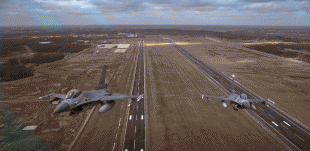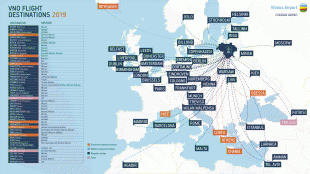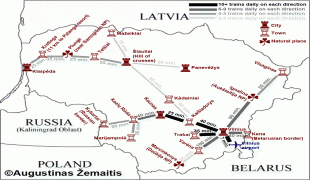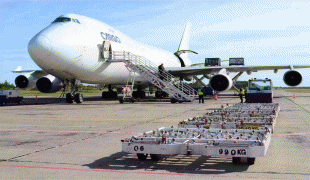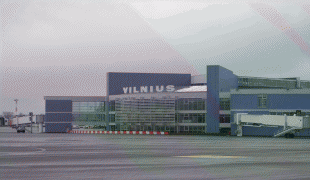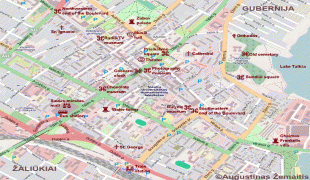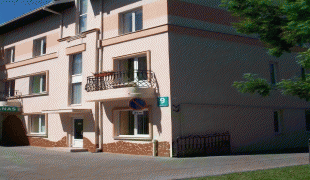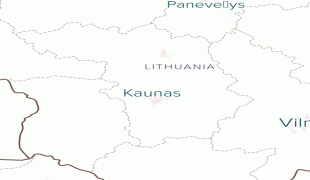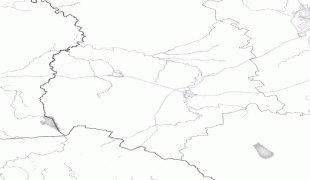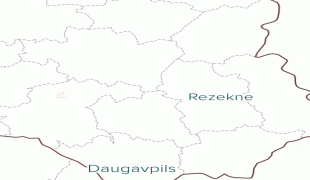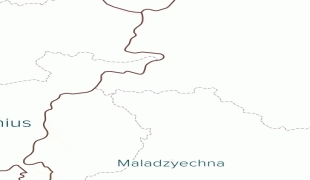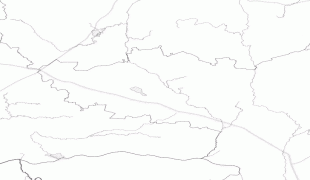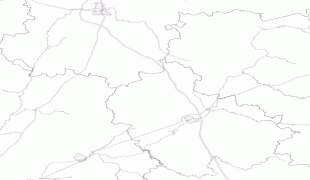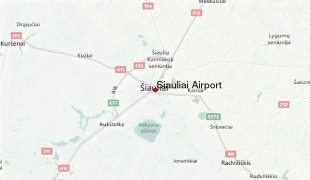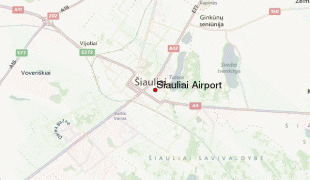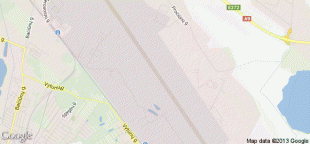Šiauliai International Airport (Šiauliai International Airport)
Šiauliai International Airport is an airport located within Šiauliai Air Base which is a major military facility of the Lithuanian Air Force and one of the air bases of the NATO Baltic Air Policing mission. The joint-use airport is also known by its historic name of Zokniai aerodrome (Zoknių aerodromas) and is located 7 km southeast of the city of Šiauliai in northern Lithuania.
Zokniai area was first used as an aerial warfare facility in 1916–1917, when the German forces built hangars for their Zeppelin airships. Lithuanian Air Force began expanding during the Interwar period, as the country was acquiring foreign aircraft as well as domestically produced ANBO-series aircraft, making the Kaunas aerodrome insufficient. In 1931, Zokniai aerodrome was built as a second airbase for the Lithuanian Air Force. It was a base of the 3rd, 4th and 5th squadrons. At that time, it was able to host 35 aircraft, including Ansaldo A.120, Letov Š-20, Gloster Gladiator, de Havilland Dragon Rapide and the domestically produced ANBO 41. For a brief time, the aerodrome hosted Lituanica II.
The concrete runways were first built during the German occupation in 1943. Following the Soviet occupation of Lithuania, the aerodrome was taken over by the Soviet forces. Two parallel runaways, 3.5 km and 3.2 km long, were built by 1957 for Ilyushin Il-28 and it became a major military airport able to host jet fighters and strategic bombers. It was also one of only six Soviet airbases capable of handling the Myasishchev M-4 bomber. Following the independence restoration in 1991, the airport was soon returned to the Lithuanian Air Force.
In 1990s, it was renovated and also equipped for civilian operations. In 1994, Šiauliai Airport gained the status of international airport. It was further modernized in 2004 when Lithuania joined NATO. It became a NATO air base, hosting the Baltic Air Policing mission, with the first NATO F-16 jet fighters from the Belgian Air Component landing on 29 March 2004.
Zokniai area was first used as an aerial warfare facility in 1916–1917, when the German forces built hangars for their Zeppelin airships. Lithuanian Air Force began expanding during the Interwar period, as the country was acquiring foreign aircraft as well as domestically produced ANBO-series aircraft, making the Kaunas aerodrome insufficient. In 1931, Zokniai aerodrome was built as a second airbase for the Lithuanian Air Force. It was a base of the 3rd, 4th and 5th squadrons. At that time, it was able to host 35 aircraft, including Ansaldo A.120, Letov Š-20, Gloster Gladiator, de Havilland Dragon Rapide and the domestically produced ANBO 41. For a brief time, the aerodrome hosted Lituanica II.
The concrete runways were first built during the German occupation in 1943. Following the Soviet occupation of Lithuania, the aerodrome was taken over by the Soviet forces. Two parallel runaways, 3.5 km and 3.2 km long, were built by 1957 for Ilyushin Il-28 and it became a major military airport able to host jet fighters and strategic bombers. It was also one of only six Soviet airbases capable of handling the Myasishchev M-4 bomber. Following the independence restoration in 1991, the airport was soon returned to the Lithuanian Air Force.
In 1990s, it was renovated and also equipped for civilian operations. In 1994, Šiauliai Airport gained the status of international airport. It was further modernized in 2004 when Lithuania joined NATO. It became a NATO air base, hosting the Baltic Air Policing mission, with the first NATO F-16 jet fighters from the Belgian Air Component landing on 29 March 2004.
| IATA Code | SQQ | ICAO Code | EYSA | FAA Code | |
|---|---|---|---|---|---|
| Telephone | +370 41 542005 | Fax | +370 41 542006 | ||
| Home page | Hyperlink |
Map - Šiauliai International Airport (Šiauliai International Airport)
Map
Country - Lithuanian_Soviet_Socialist_Republic_(1918–1919)
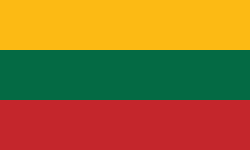 |
 |
| Flag of Lithuania | |
Germany had lost World War I and signed the Compiègne Armistice on 11 November 1918. Its military forces then started retreating from the former Ober Ost territories. Two days later, the government of the Soviet Russia renounced the Treaty of Brest-Litovsk, which had assured Lithuania's independence. Soviet forces then launched a westward offensive against Estonia, Latvia, Lithuania, Poland and Ukraine in an effort to spread the global proletarian revolution and replace national independence movements with Soviet republics. Their forces followed retreating German troops and reached Lithuania by the end of December 1918.
Currency / Language
| ISO | Currency | Symbol | Significant figures |
|---|---|---|---|
| EUR | Euro | € | 2 |
| ISO | Language |
|---|---|
| LT | Lithuanian language |
| PL | Polish language |
| RU | Russian language |






